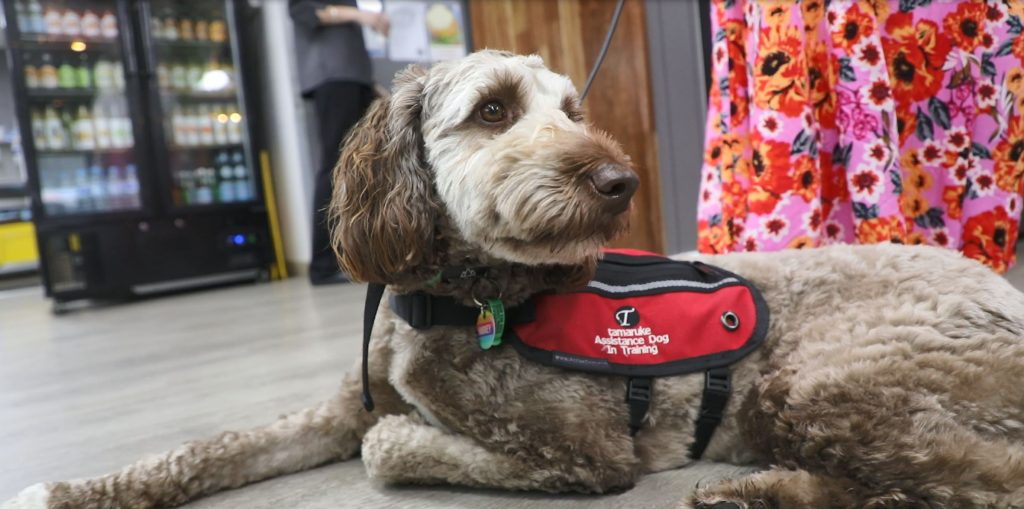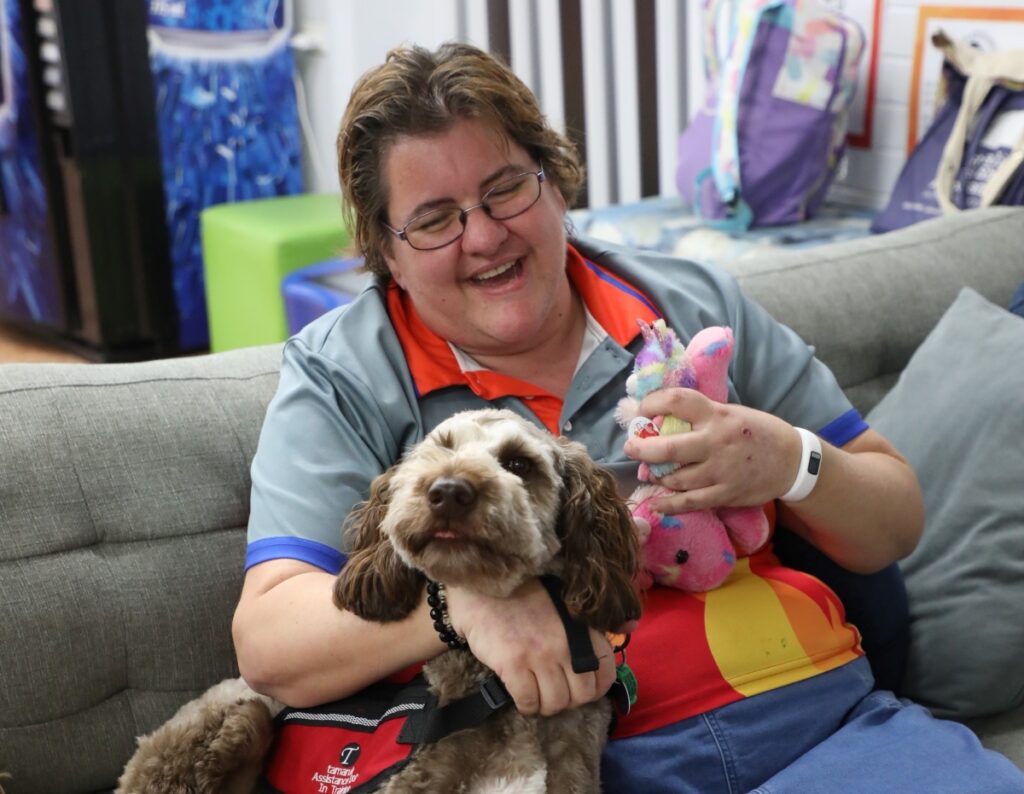
Assistance animals like Bundaberg’s Harvey the Tamaruke play an important role in the community and undergo training to support people with special needs.
Assistance dogs perform specific tasks related to their owner’s needs, assisting them to develop independence and confidence, and to participate in various areas of personal and public life.
Integrated Disability Support Service (IDSS) client liaison officer Shelly Anderson, who is one of Harvey’s handlers, said there were many situations where animals assisted people living with disability and mental health issues such as anxiety, PTSD and depression.
Shelley said Harvey the Tamaruke was fully trained and was even a unique breed of dog specifically used as a therapy or assistance animal because they’re hypoallergenic, well-tempered, intelligent and easily trained.
Harvey joined the team in July last year when he was just 10 weeks old, and he now works at the IDSS hub.
“Harvey is really beneficial to everybody, he can even tell when someone is having a bad day – it’s like he is attuned and can sense it, and he knows something is up even before us as other humans do,” Shelley said.
“Whether it’s a physical disability or a hidden disability such as mental health, Harvey has a way of supporting people.”
He can often be found supporting clients in various roles in the community, including spending time at local business The Deli, supporting employees.
Integrated Disability Support Service participant Leticia Pope enjoys her time working at The Deli, and she said knowing Harvey wasn’t far away made it easier.
Leticia said she enjoyed taking Harvey for walks, and she said he would help her interact with other people.
“To have Harvey in the IDSS hub makes a lot of people happy,” Leticia said.
“He likes to meet new people and he likes to have pats; he can be a little bit cheeky.
“Harvey is one of my best friends.”
Shelley said Harvey had full run of the hub and enjoyed spending time with clients as much as they enjoyed their time with him.
“You know if somebody is quite stressed, they will verbalise it and you’ll hear a loud noise or screaming, he will go out to the hub and find that person and try to sit with them and give them lots of love and kisses, and then he will stay with them for quite a while,” Shelley said.
“The hub has a lot of activities for people with disabilities and mental health activities, he has full run of the hub, and he is in and out with participants – hanging out enjoying the day with them.
Shelley said Harvey greeted clients and mentors each morning and had become part of the IDSS family.

“He greets everybody as we all come in in the morning,” she said.
“Most people, if there is a behaviour happening that they’re anxious and need that calming down, he will sort them, have a bit of a cuddle and you can really see the whole de-escalation happening for them, because they’ve got him.
“He offers kisses up very freely as well, he is very affectionate, and it makes a huge difference easing the anxiety.”
Shelley said Harvey’s role in the community was a little different to a guide dog, as he was able to interact with community members while on the job.
“Being a therapy assistant dog is a little different, you can give him a pat… as he is different to a guide dog that needs to be working the whole time.
“It is important to have him go into a shop comfortably.”
Animal assisted therapy can:
Teach empathy and appropriate interpersonal skills.
Help individuals develop social skills.
Be soothing and the presence of animals can more quickly build rapport between the professional and client.
Improve individual’s skills to pick up social cues imperative to human relationships. Professionals can process that information and use it to help clients see how their behaviour affects others.




